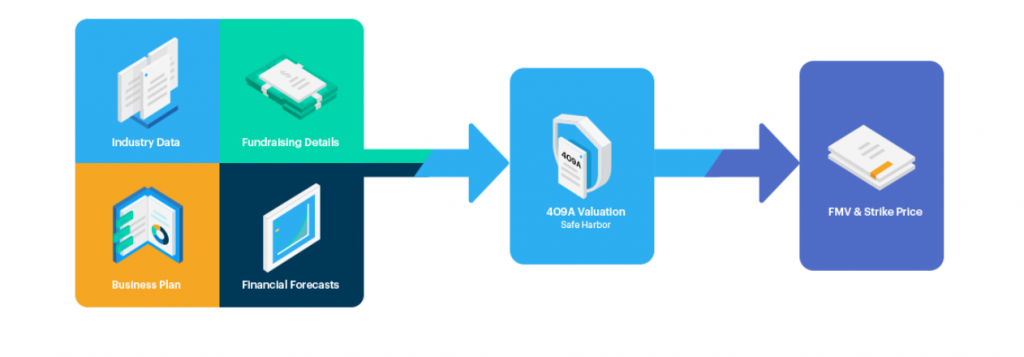Tax and Finance due diligence checklist to prepare for raising VC Investment funding and Series A rounds
![]() Recently the well known startup incubator /seed accelerator Ycombinator, (which was launched in March 2005 and has been used to launch over 2,000 companies including Stripe, Airbnb, Cruise Automation, DoorDash, Coinbase, Instacart, and Dropbox) published a 70-page Series A guide based on its work with 190 YC companies over the last couple of years. This was first reported on by Techcrunch. The guide has wealth of knowledge on things such as working on the investor pitch and pitch decks, investment memos, 409A valuations, what financial metrics/benchmarks do VCs look at (such as ARR, annual recurring revenue), and more.
Recently the well known startup incubator /seed accelerator Ycombinator, (which was launched in March 2005 and has been used to launch over 2,000 companies including Stripe, Airbnb, Cruise Automation, DoorDash, Coinbase, Instacart, and Dropbox) published a 70-page Series A guide based on its work with 190 YC companies over the last couple of years. This was first reported on by Techcrunch. The guide has wealth of knowledge on things such as working on the investor pitch and pitch decks, investment memos, 409A valuations, what financial metrics/benchmarks do VCs look at (such as ARR, annual recurring revenue), and more.
 If your startup is an early-stage company that is looking to fund raise in 2020, you should be thinking about preparing a due diligence materials which includes financial documents such as P&L statements, business plans, financial cash flow forecasts, tax computations, proof of tax compliance, your cap table and more. Other documents to be retained will include incorporation and constitutional documents (that evidence legal ownership, such as the company’s register of members); annual and management accounts; commercial contracts; leases; IP licences or assignments (including development agreements; employment contracts and insurance documents. This detailed list will run through all the pieces of information you’ll need to have ready once you sign a term sheet. Your financial documents tell your investors a story—how you manage money, how you plan to grow your business, etc. Working with an strategic startup accounting expert to get your books in order (before investors start looking) will help you understand the story they are currently telling.
If your startup is an early-stage company that is looking to fund raise in 2020, you should be thinking about preparing a due diligence materials which includes financial documents such as P&L statements, business plans, financial cash flow forecasts, tax computations, proof of tax compliance, your cap table and more. Other documents to be retained will include incorporation and constitutional documents (that evidence legal ownership, such as the company’s register of members); annual and management accounts; commercial contracts; leases; IP licences or assignments (including development agreements; employment contracts and insurance documents. This detailed list will run through all the pieces of information you’ll need to have ready once you sign a term sheet. Your financial documents tell your investors a story—how you manage money, how you plan to grow your business, etc. Working with an strategic startup accounting expert to get your books in order (before investors start looking) will help you understand the story they are currently telling.
Every investor and venture capitalist will have their own due diligence process, but they usually share a due diligence checklist with the startup so that the management team can collect the requested information. If your startup is a software or technology company, then investors usually require an overview of your product, your development process, samples of your code, your architecture, as well as the processes employed by your development team. Quandary Peak Research has pretty in depth post about technical due diligence from that is from the investors perspective. investors will want to see evidence that the company has full ownership of the IP underpinning the business. Information Age has an article titled “Legal housekeeping for startups before a series A round” points out that although some successful businesses achieve success simply by taking an existing idea and doing it better than their competitors, most disruptive, tech-enabled startups have at least some form of a proprietary product, or unique software, that underpins their business proposal. However, it is not uncommon for early-stage companies not to adequately register and protect their Intellectual Property (IP) at the early stages of their business. Such as when a New York-based behavioral marketing and analytics firm Bounce Exchange filed a suit against Yieldify in a New York federal court, accusing it of copying its code and infringing its patents. Or when the self driving car Waymo (Alphabet owned) sued Uber over alleged theft of its intellectual property, because Anthony Levandowski, the ex-Google engineer was accused of stealing trade secrets and taking them to Uber. Patents and IP matter a lot and is a huge issue for investors, as businesses that use systems that they don’t own could expose the startup to litigation risk, and such liabilities will only grow as the company scales.

Now the Y Combinator’s guide mentions that there a few big differences between when a startup is raising Series A seed round vs a Series B round. In the chapter called “when to raise”,
“to understand what’s going on at the A round, it’s helpful to think of the decision process for funding as sitting along a horizontal axis. This axis roughly corresponds to the progression of a company from an idea to a functioning, scaling business. The decision process and the progress of the company are closely related because – at each point in the life of a company – an investor looking at the company only has the evidence of everything that the company has achieved up to that point. That evidence strongly informs that investor’s decision. The biggest gap in this axis is between Promise and Metrics, which maps to the seed round and the B round respectively.” – Ycombinator Aaron Harris
 As Ycombinator mentions that many seed rounds get raised founders and the raw story that they can tell about their company and the future that company will create. By the Series B, those founders need to have accomplished a significant set of things that prove their ability to accomplish that future. This usually takes a few years, and comes with a set of in depth metrics about the health of the business and the impact of additional capital on that business. Ycombinator states “the exact set of metrics will vary depending on the specifics of the business – a hard tech or biotech company will be evaluated by the technical or regulatory milestones hit, whereas a software company would be expected to have a substantial amount of revenue and growth.” I suggest you read more of the guide it has a ton of useful information.
As Ycombinator mentions that many seed rounds get raised founders and the raw story that they can tell about their company and the future that company will create. By the Series B, those founders need to have accomplished a significant set of things that prove their ability to accomplish that future. This usually takes a few years, and comes with a set of in depth metrics about the health of the business and the impact of additional capital on that business. Ycombinator states “the exact set of metrics will vary depending on the specifics of the business – a hard tech or biotech company will be evaluated by the technical or regulatory milestones hit, whereas a software company would be expected to have a substantial amount of revenue and growth.” I suggest you read more of the guide it has a ton of useful information.

In most cases, startups working on Series A business startup funding round have developed their concept, created a credible business proposal and sourced the seed or early-stage capital (from angel or ‘friends and family’-type investors, or crowdfunding) to have a minimum viable product ready. They have also been able to demonstrate sufficient market interest in their product. In short, when you’ve reached this point of your startup’s growth cycle, you have objectively verifiable potential to realize considerable long-term profits in the future.
This is the stage where business startup funding becomes substantial: Series A funding rounds typically range from about $2 million to about $15 million. Along with the increased funds comes increased scrutiny. Every professional VC investor will do its due diligence before investing in any business. That is where Series A due diligence comes in. This lawtrades article titled “your startup’s Due Diligence checklist for Series A Funding” has some useful tips. After all, they will be writing a substantial check, and therefore will need to ensure that the company matches the investment proposal presented to them. VCs also want to ensure that there are no issues that could undermine their pre-money valuation or the general viability of the business.
The Due Diligence VC Series A round can be broken into several categories
- Financial Due Diligence
- Team Due Diligence
- Legal Due Diligence
- Technical Due Diligence
- Corporate Structure and Equity Grants
- Security Issuances and Agreements Concerning Securities
- Material Agreements Due Diligence
Of course, VC’s will also conduct legal, team, sales and marketing, technology, corporate structure and equity, market and other categories of due diligence, which are not going to be covered in the post. YCombinator’s Series A checklist article from 2018 goes into more technical detail about what investors and the lawyers expect to see from companies before they invest.
Tax, Accounting, Finance and HR Due Diligence Checklist
I strongly suggest you have your books and taxes in order prior to beginning a fund raise for your startup. Startup CPA firm Kruze Consulting put together at helpful VC due diligence pdf report, which they list a number of categories metrics, and priorities which is a mix used by many top tier venture investors (and large corporate acquirers of startups).
Financial Due Diligence
- Income Statement – Last 3 years by month and by year – high priority
- Balance Sheet – Last 3 years by month and by year – high priority
- Cash Flow Statement – Last 3 years by month and by year – high priority
- Financial Projections – (Income Statement, Cash Balance) -Last 3 years by month and by year – high priority – Explain the key KPIs and how they change as the company matures
- Booking History/ Projections – Last 3 years by month and by year – high priority – Especial for companies with sales teams
- AR Aging and Projections – Current period – low – Include and AR greater than 90 days past due
- Deferred Revenue Details and Projections – Low – Highlight the product or service associated with major deferred revenue positions
- Schedule of bad debt and write offs – Recent period, near-term projections – Low – If any Include any material projections
- Inventory – current period – Low – Value by SKU Include aging and any amounts deemed obsolete
- Accounts Payable – current period – Low – List of any employees or service providers that are unpaid, have not been paid in full to date, or are subject to any payment deferral arrangements
- Name of Current Accounting System – current – Low – And the date started using the system
- Name of Current Payroll System – current – Low- And the date started using the system, and payroll schedule (weekly, bi-monthly, monthly)
- Contracts and Invoices for top 10 clients – current period – High – Not relevant if not an enterprise sales model
- Contracts and Invoices for any churned clients – last 6 months – High – Only material clients
- Leases – current period – Medium – Any agreements concerning the purchase, lease or sublease of real property, any personal property leases
- Material contracts – current – High – Any agreements, understandings, instruments, contracts or proposed transactions to which the Company is a party or by which it is bound which involve obligations of, or payments to, the Company in excess of $20,000
- Cost to Acquire Customer – Current and Previous Year -High- Highlight expenses included and excluded
- Customer LTV – Current and Previous Year -High- Explain the assumptions behind the calculation
- Customer Churn Rate – Current and Previous Year -High- Explain any changes in churn rate
Tax Due Diligence
- Federal Tax Returns – Last 3 years – High
- Local / State Tax Filings – Last 3 Years – High
- Correspondence with tax authorities – Since inception – High – Federal, state and local – any correspondence between the Company and the IRS or any state or local tax bureau or any federal, state or local governmental authority
- 409 Valuations – Last 2 – High – Copies of Internal Revenue Code Section 409A valuation reports
- R&D Tax Credit Reports – Medium – Current period
HR Due Diligence
- Organization Chart – Current – High – Who reports to whom
- Salary Schedule for All Employees – Current – High – Showing title, current base salary and bonus for all employees; include any obligations to terminated employees, highlight any changes to salaries, bonuses or compensation to employees after the transaction
- Consultants – Current Period -High – List of consultants, role and cost
- Projected Hiring Plans – Next 3 years – High – Projected hires by month, with title and projected compensation
- Transactions with Officers – Current period – High – Any existing or proposed agreements, understandings or transactions between the Company and any of its officers, directors, material stockholders or any affiliate including, without limitation, non-competition agreements, employment agreements and non-form offer letters
- Insurance – Current Period – Medium – Any insurance policies (including documentation regarding workers’ compensation insurance) held by the Company or of which the Company is a beneficiary and a summary of such policies, if available
- Offer Letter – Current Period -Medium – Copy of the Company’s standard offer letter
- Special Employee Agreements – Current Period -Medium -All employment agreements and other documents (such as offer letters) that contain change of control, severance provisions, bonus provisions or acceleration of stock or option vesting
- Employee Benefits – Current Period -Medium – Any employee benefit plans and arrangements, including, without limitation, stock option plans, bonus plans, pension plans, 401(k) plans insurance plans and forms of agreements (including copies of all form of option and stock agreements that are in use)
- Employee Accrued Expenses – Current Period -Medium -A list and breakdown of all outstanding accrued salary, paid time off, and reimbursable expenses
- Foreign Employees – Current Period -Medium – If the Company has any foreign employees, a list (separated by country) of all benefits provided to foreign employees, and their locations







